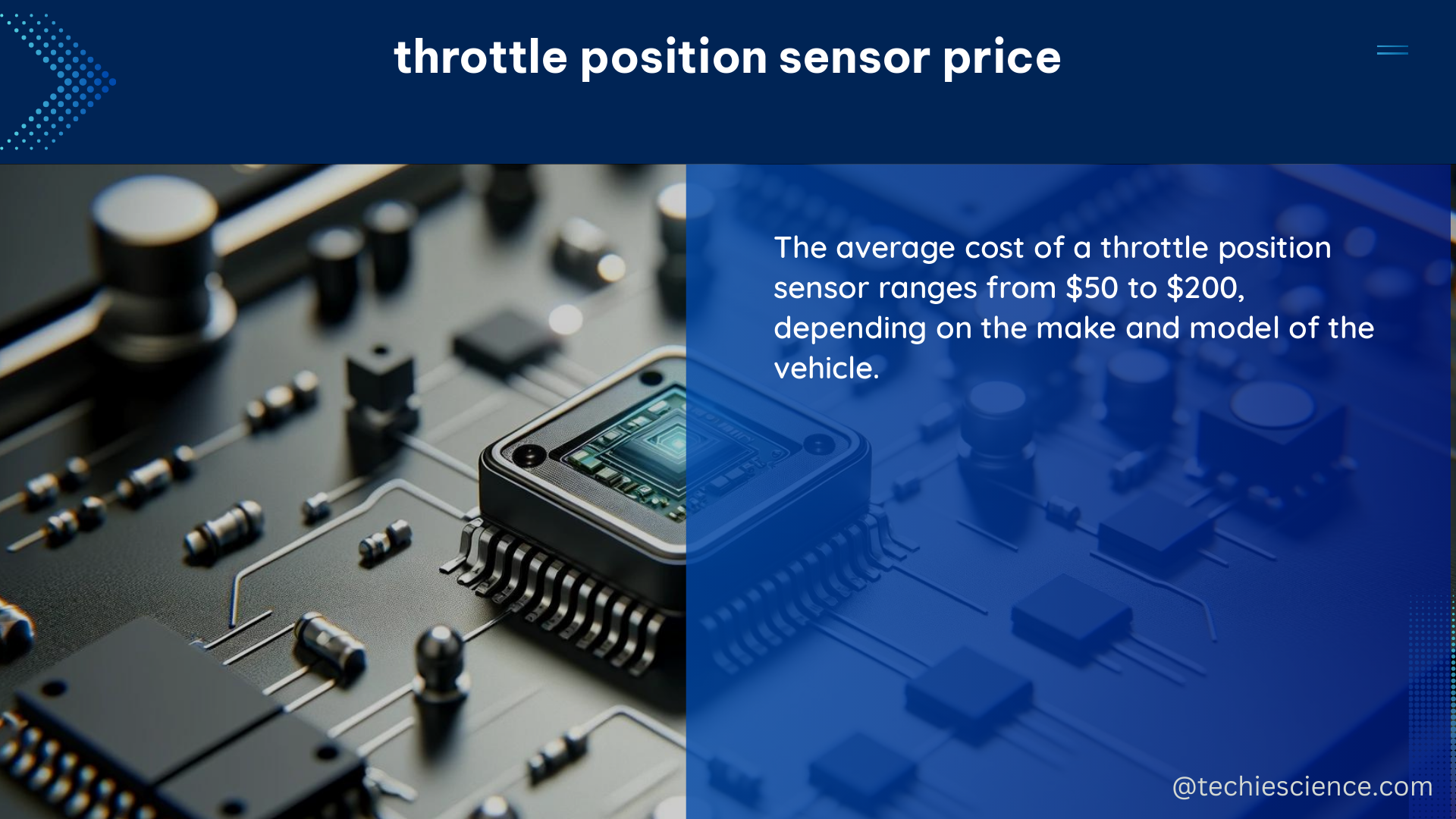The throttle position sensor (TPS) is a critical component in modern vehicles, responsible for measuring the position of the throttle valve and relaying this information to the engine control unit (ECU). This data is essential for the ECU to manage and optimize the engine’s fuel injection and ignition systems. When the TPS malfunctions or fails, it can lead to various drivability issues, including stalling, misfiring, and poor fuel efficiency.
Understanding Throttle Position Sensor Prices
The cost of a throttle position sensor can vary significantly depending on the make, model, and year of the vehicle. Let’s explore some examples to understand the range of TPS prices:
Lexus LS 430 (2001)
For a 2001 Lexus LS 430, the TPS price can range from around $59 for a lower-cost option to potentially much higher prices for more advanced or OEM sensors. The forum post on ClubLexus also mentions the possibility of slack in the throttle cable as a potential cause of the observed symptoms, which could be another factor to consider when diagnosing and addressing the issue.
Royal Enfield Motorcycles
In the case of Royal Enfield motorcycles, the throttle position sensor may have a different price range. The forum post on the Royal Enfield Owners Club discusses the importance of TPS calibration and the potential impact of a faulty TPS on engine timing. While the post does not provide specific pricing information, it highlights the significance of proper TPS function and the potential consequences of a failed sensor.
Ford Mustang Mach 1 (2003)
The forum post on SVTPerformance offers a more detailed analysis of a TPS issue in a 2003 Ford Mustang Mach 1. The post describes an inaccurate TPS reading at idle, which the author suspects may be causing drivability issues and negatively affecting fuel efficiency. The author explores potential causes, such as a misaligned or improperly installed TPS, and seeks advice on troubleshooting and resolving the problem.
Factors Affecting Throttle Position Sensor Prices

The price of a throttle position sensor can be influenced by several factors, including:
-
Vehicle Make and Model: The specific make and model of the vehicle can significantly impact the TPS price. Luxury or high-performance vehicles may require more advanced or OEM-specific sensors, which can be more expensive.
-
Sensor Technology: Newer vehicles may use more sophisticated TPS designs, such as electronic or digital sensors, which can be more costly than traditional analog sensors.
-
Sensor Quality: The quality and durability of the TPS can also affect the price. OEM or premium aftermarket sensors may be more expensive but offer better performance and reliability.
-
Sensor Complexity: Some vehicles may have more complex TPS designs, with additional features or integration with other systems, which can increase the sensor’s price.
-
Sensor Availability: The availability of the TPS in the market can also impact the price. Rare or hard-to-find sensors may be more expensive due to limited supply.
-
Labor and Installation Costs: In addition to the sensor itself, the cost of labor and installation can also contribute to the overall price of replacing a throttle position sensor.
Troubleshooting and Diagnosing TPS Issues
When dealing with throttle position sensor issues, it’s essential to consider various factors, such as potential misalignment or improper installation, and to seek professional advice when necessary. Some common symptoms of a faulty TPS include:
- Rough idling
- Stalling
- Misfiring
- Poor fuel efficiency
- Hesitation or delayed throttle response
To diagnose and address TPS issues, you may need to:
- Perform a visual inspection of the sensor and its connections.
- Use a multimeter to check the sensor’s voltage output and resistance.
- Ensure the TPS is properly aligned and installed according to the manufacturer’s specifications.
- Consider the possibility of other related issues, such as a problem with the throttle cable or the ECU.
- Consult the vehicle’s service manual or seek the advice of a professional mechanic for specific troubleshooting and repair procedures.
Conclusion
The price of a throttle position sensor can vary significantly depending on the make, model, and year of the vehicle, as well as factors such as sensor technology, quality, and availability. When dealing with TPS issues, it’s essential to consider various factors, such as potential misalignment or improper installation, and to seek professional advice when necessary. By understanding the range of TPS prices and the factors that influence them, you can make informed decisions when it comes to maintaining and repairing your vehicle’s throttle position sensor.
References:
- Throttle/Pedal Position Sensor – ClubLexus – Lexus Forum Discussion: https://www.clublexus.com/forums/ls-3rd-gen-2001-2006/866480-throttle-pedal-position-sensor.html
- Throttle Position Sensor (TPS) Calibration – Royal Enfield Owners Club Forum: https://www.royalenfieldowners.com/index.php
- Throttle position sensor reads 19% at idle. What’s going on? – SVTPerformance Forum: https://www.svtperformance.com/threads/throttle-position-sensor-reads-19-at-idle-whats-going-on.349900/

The lambdageeks.com Core SME Team is a group of experienced subject matter experts from diverse scientific and technical fields including Physics, Chemistry, Technology,Electronics & Electrical Engineering, Automotive, Mechanical Engineering. Our team collaborates to create high-quality, well-researched articles on a wide range of science and technology topics for the lambdageeks.com website.
All Our Senior SME are having more than 7 Years of experience in the respective fields . They are either Working Industry Professionals or assocaited With different Universities. Refer Our Authors Page to get to know About our Core SMEs.